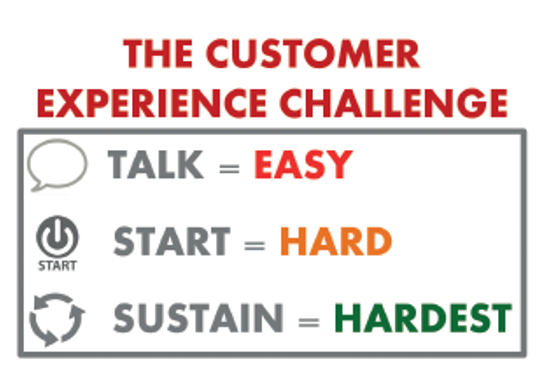10 CIM assignment tips
1. RTFQ (Read The Flipping Question)
Check that you are answering the question, not what you think the question is.
Start by noting the command verb (analyse, evaluation, describe, etc) so you can decipher how best to format your answer. Then highlight what the question is asking of you, for example, CURRENT internal communications and their impact on customer engagement. Talk about the internal marketing tools you use and show the impacts on your customers (links leading to). Do not simply describe what you do internally, and consider the second part of the question. As you plan your answer, ask yourself 'is this relevant?'.
2. Analyse, don't describe
I write this on pretty much every single CIM assignment draft. Again, if the question is asking you to 'analyse', then make sure you do this. Just listing what you're doing or giving me a shopping list of what you will do is NOT enough. You need to provide analysis and evidence to justify/explain WHY you're doing/planning this. Link this analysis to evidence and the core marketing models. Remember, this is an academic piece of work and therefore it is essential you treat it as such.
3. Use references
Harvard references are needed to demonstrate this evidence (2-3 per page as a rough rule of thumb). Don't just reference the coursebook - show a breadth and depth of reading. Your CIM membership gives you access to EBSCO, a library of online journals and articles, for your secandary reading and the College guides will reference recommended further reading. These are available at your convenience so make the most of them.
4. Make it easy to read
The marker will be bored and under a huge time pressure. Do not turn your assignment into a treasure hunt where your nuggets of mark earning text are buried in dense prose. I once had a 700 word paragraph - not nice.
5. 11pt is not the only font size
...(and black is not the only colour). Use headings and sub-headings to help the marker (and your tutor for the module) navigate your work. Make it easy for us to find what we're looking for. Don't use the Microsoft Word header auto-numbering feature. It does not match the CIM assignment structure and you shouldn't rely on it when formatting your assignment.
6. Yes the word count is tight
This is deliberate. It ensures you give concise answers and discourages you from adding unnecessary intros and wasting words. Anything below the word count is highly unlikely to answer in sufficient detail. Word count for sub-sections should be pro-rata to the marks awarded.
7. Don't game the system in your appendices
Appendices are not marked. So if you decide to add a 3 page SWOT analysis in an appendix and say "Please see Appendix S for a SWOT analysis", this will earn you no marks. We encourage the use of diagrams and tools, which have been personalised to your organisation, to help explain your answer, as points 8 and 9 will detail.
8. A picture is worth a thousand words
Use diagrams to help explain complex things. You can use these are a basis for your answer, tailoring them to match how they would work for your company. This saves you the initial description of what you're talking about before you describe it, saving you words for your analysis / evaluation around this. It's also nice to have a mix of visuals and text. Give consideration to how you format your answers.
9. Ctrl C, Ctrl V does not earn you marks
Do not simply copy stock diagrams - make them personal to your business (show how your sales funnel works, not just a generic funnel). Remember, the examiner wants to see you understand and can apply concepts to your organisation, not simply that you know what each model is. Show them why the framework is relevant to the answer and to your business.
10. Would you show your CIM assignment to your boss?
If the answer is no, why would you showing it to me or the marker? Consider this question as you go through, think about what you provide to your boss, remember why you are studying the CIM course and it may encourage some changes.
One final thought...
Once you have written the draft, print it out and print out the assignment questions and do a parallel read/trial marking of your own work. Can you honestly see where and how you have answered the question and earned the marks?



